Amherst officials grapple with how to loosen housing squeeze
| Published: 05-24-2023 4:24 PM |
AMHERST — Developing senior housing projects that could potentially free up existing homes for younger families, increasing housing density around town, and encouraging the University of Massachusetts to provide more housing for its students are among ways to expand housing opportunities of all types in Amherst.
The Community Resources Committee and the Amherst Municipal Affordable Housing Trust recently discussed ideas jointly with Assistant Town Manager David Ziomek and Senior Planner Nate Malloy to begin mapping out approaches for addressing the town’s housing shortage, with a specific focus on both affordable housing and workforce housing.
“We are deeply committed to housing production in Amherst and affordable housing production, specifically, in Amherst,” Ziomek said.
But while Ziomek said Amherst has been a leader in producing affordable housing, costs have risen sharply for developers, and new approaches and creative solutions are needed to maintain housing production.
The town has purchased the former VFW building on Main Street, where both affordable housing and a permanent homeless shelter might one day be located, while the former Matuszko Trucking terminal on Ball Lane is slated to become an affordable condominiums project under Valley Community Development. A Way Finders affordable housing project will incorporate the East Street School, and other sites on Belchertown Road are being developed. Other properties are now being looked at for projects, such as the former South Amherst school.
“The key is to get as many projects in the pipeline as possible, and that’s what the town is trying to do,” Ziomek said.
Amherst has 9,621 housing units, of which 1,251 are considered part of the state’s subsidized housing inventory, Malloy said. Only 894 units are actually affordable by definition, though, which is for individuals or families earning no more than 80% of the area median income.
Average rents in town of $1,800 to $2,000 a month for one-bedroom homes is already above what someone earning at 80% of the area median income can pay, as well as for those who receive federal Section 8 housing vouchers.
Article continues after...
Yesterday's Most Read Articles
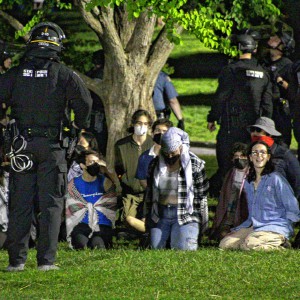 More than 130 arrested at pro-Palestinian protest at UMass
More than 130 arrested at pro-Palestinian protest at UMass
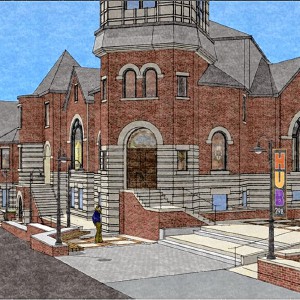 Public gets a look at progress on Northampton Resilience Hub
Public gets a look at progress on Northampton Resilience Hub
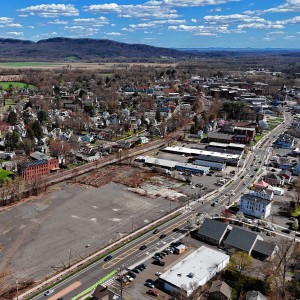 Northampton bans auto dealerships near downtown; zone change won’t affect Volvo operation on King Street
Northampton bans auto dealerships near downtown; zone change won’t affect Volvo operation on King Street
 UMass basketball: Bryant forward Daniel Rivera to be Minutemen’s first transfer of the offseason
UMass basketball: Bryant forward Daniel Rivera to be Minutemen’s first transfer of the offseason
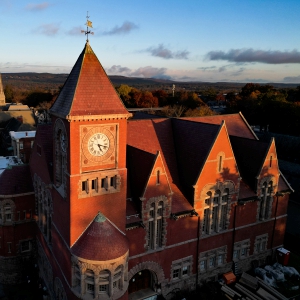 Town manager’s plan shorts Amherst Regional Schools’ budget
Town manager’s plan shorts Amherst Regional Schools’ budget
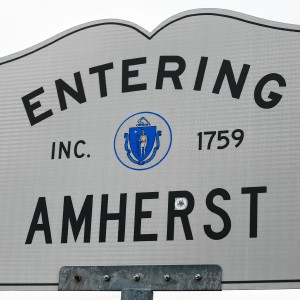 Police respond to alcohol-fueled incidents in Amherst
Police respond to alcohol-fueled incidents in Amherst
“On average, market rate in Amherst is above what a voucher can afford, or what is considered affordable,” Malloy said.
A 2021 comprehensive housing policy for Amherst linked to the town’s master plan recommends developing 250 new units of housing at 80% average median income or less over five years, and 850 new units of housing at that 80% of area median income or above over five years.
A UMass Donahue Institute report completed in 2022 illustrates the housing mismatch through the region, where over 17,000 units are needed for low- or moderate-income individuals or families.
“I think Amherst can do its part, but it’s also a regional issue,” Malloy said.
Ziomek said being able to put more homes on existing properties is critical. “That’s got to be the name of the game, density in our village centers,” he said.
Carol Lewis, who co-chairs the Municipal Affordable Housing Trust, said Amherst has zoning that requires bigger lots and less compact development than surrounding towns. “Amherst has these things that makes it harder to build something here,” Lewis said.
Having more density near UMass though, District 3 Councilor Dorothy Pam said, will only break a great residential neighborhood. “We have to build a wider variety of housing, but it can’t be done with market forces, because the market is really bad,” Pam said.
Aschleigh Jensen-Eldridge, a member of the trust who lives in affordable housing, said few homes and apartments in town are really affordable.
“It’s a good point to remember this is why people are leaving Amherst. They can’t afford anything at market rate,” Jensen-Eldrige said. “There’s 895 chances, and a lot of those units are full.”
District 3 Councilor Jennifer Taub said officials need to get beyond the reality that the dominant market in Amherst is student housing. “That is really challenging as the private market is going to build at the highest price they can get,” Taub said.
“The student market really does impact Amherst,” Malloy said.
District 4 Councilor Pamela Rooney, too, said Amherst needs to put pressure on the university to build more housing or procure it from some other source, such as the idea of renting empty rooms from Hampshire College.
At Large Councilor Mandi Hanneke said she would like to identify places for 55 and over projects, which would allow older residents to downsize and open up housing for younger families.
West Pomeroy Lane on the town-owned Hickory Ridge golf course land might be an appropriate location, said John Hornik, a former member of the trust. “I think that should be on the priority list,’ Hornik said.
Malloy said renters and communities of color are subject to whims of landlords and the market, but it’s unclear if homeownership is attainable.
“Homeownership is expensive,” Malloy said. “The traditional single-family home may not be sustainable moving forward, or even now.”
A day after the meeting, Rep. Mindy Domb, D-Amherst, convened a meeting on housing in Amherst at Valentine Hall at Amherst College, with town councilors, representatives from Valley Community Development and Way Finders and UMass on hand, as well as Rep. James Arciero, D-Westford, who chairs the state’s Joint Committee on Housing.
The meeting, Domb said, was to brief Arciero on how the state’s housing crisis is experienced in Amherst, what officials are doing to address it, and how the government might help.
Scott Merzbach can be reached at smerzbach@gazettenet.com.
 Valley lawmakers seek shorter license for FirstLight hydropower projects
Valley lawmakers seek shorter license for FirstLight hydropower projects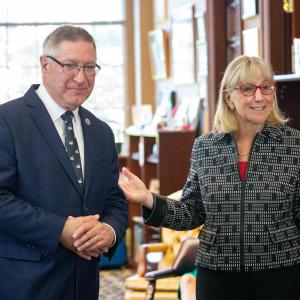 State Senate budget funds free community college for all
State Senate budget funds free community college for all ‘We can just be who we are’: Thousands show support for LGBTQ community at Hampshire Pride
‘We can just be who we are’: Thousands show support for LGBTQ community at Hampshire Pride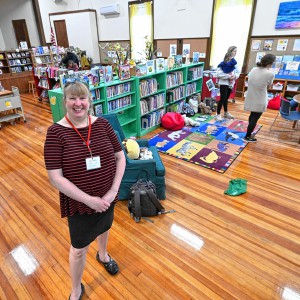 Doors open at Tilton Library’s temporary home at South Deerfield Congregational Church
Doors open at Tilton Library’s temporary home at South Deerfield Congregational Church
